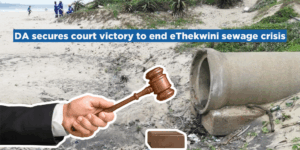The Drakenstein Municipality had since 2000 put asserted effort in to reduce water losses. The water losses were in the order of 34% (1999/2000) and through concerted efforts by the Municipality it has been brought down to 9.26%. On average over the past 16 years the water losses are at 12% while the average water losses in South Africa are at 38%.
The low water loss figures are due to:
- Replacement of old water pipe infrastructure (this was started in the early 1990`s). The pipe systems were replaced using the best quality pipes fittings on the market. It is calculated that the new pipes have a lifespan of between 50 and 100 years.
- Replacement and upgrading of efficient pumps and motors. All the pump stations at Drakenstein have been upgraded during the last 10 years.
- Replacement of bulk water meters and metering of unmetered fire, parks and sport field connections. This is an ongoing project and will take a long time to complete. With the current drought the losses have reduced drastically because the connections have been shut down until the dam levels improve.
- Replacement of domestic water meters. Water meters are replaced when meters are reported to be faulty or with high meter readings.
- Pressure management. The water pressure in the networks is brought down using pressure reducing valves and the use of a flow controller. By bringing down the water pressure to a more controlled pressure range reduces water losses and this intervention is the main contributor to the impressive reduction figures in Drakensteins’ water percentages.
- Repair of burst pipes and leak repair. Finding and responding to major leaks and burst pipes is a priority and reaction time to burst pipes is crucial. Higher volumes of water are lost by slow reactions times.
- Public awareness. The campaign managed by die Water Service section is done on a continuous bases. This includes an annual Water Week Campaign and organised trips to the water treatment works on Paarl Mountain.
- Dedicated staff. For the sustainability of the losses a dedicated staff with common goals is required. Preventative maintenance of key high mechanical installations are required to sustain the proper operation of the system.




